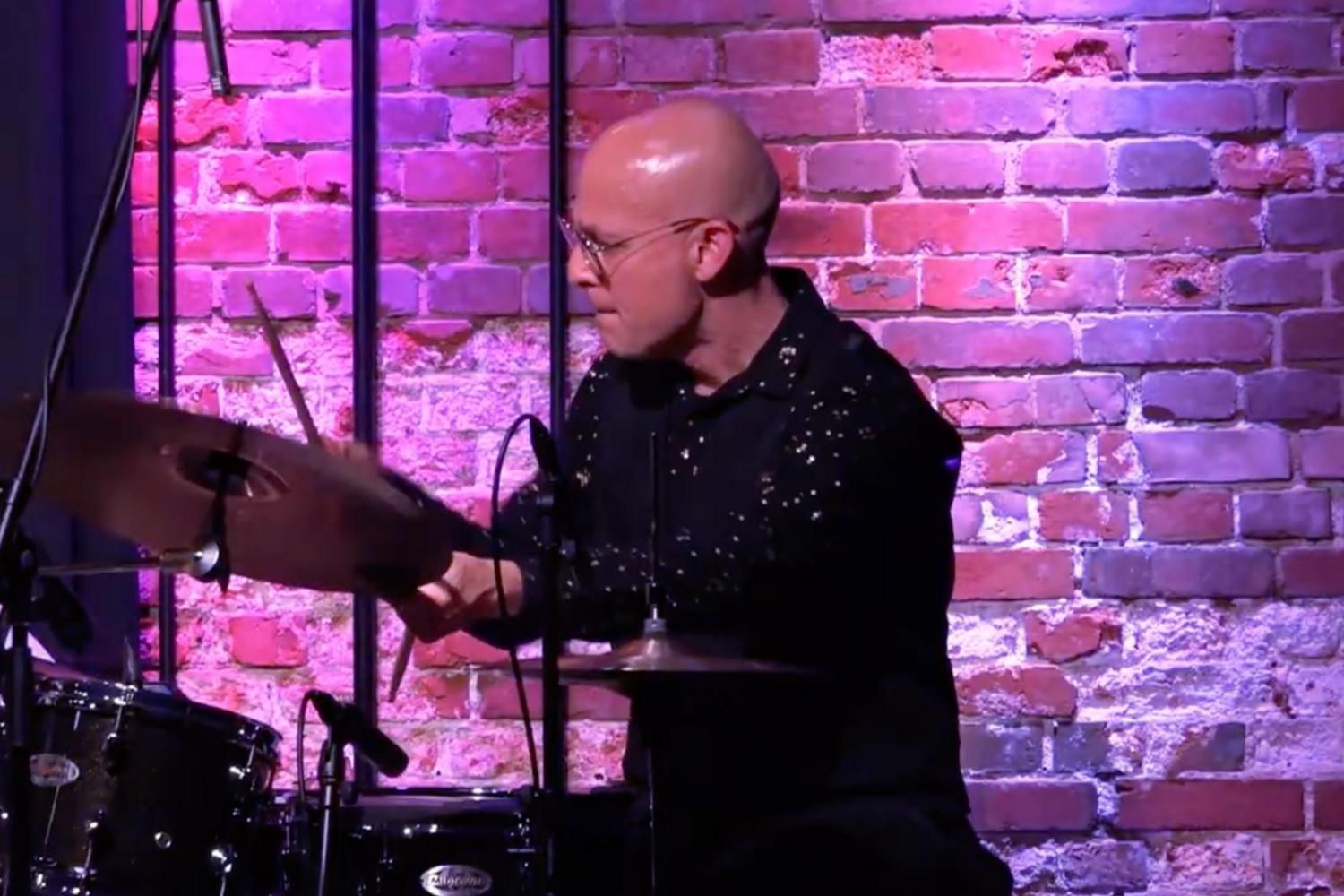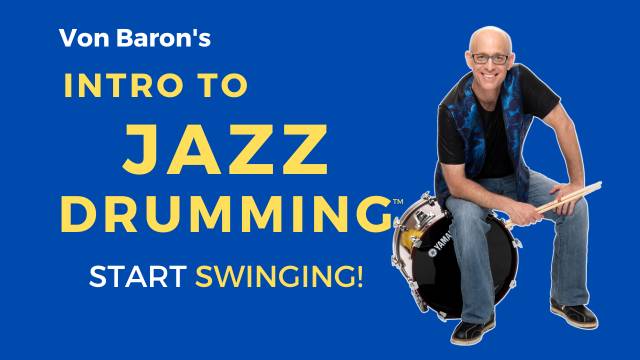Von Baron
How To Improve Your Flow On The Drums: 3 Exercises That Changed My Drumming
Hey there, my friend, let’s talk honestly for a sec about how to improve your flow on the drums.
Have you ever been deep in the pocket, swinging hard on the ride, only to hit a drum fill and suddenly feel like your groove just fell apart? Yeah? Me too. It’s one of the most common frustrations I hear from Jazz drummers new to the game or playing for years.
That moment where you go from a drum fill, and then back to time, is the flow we’re talking about. And if you’re like most of the drummers I talk to, you’re probably wondering how to improve your flow on the drums without getting stuck in robotic licks or losing the groove completely.
That’s exactly why I made this video for my Jazz Drum School YouTube channel. It’s called “3 Jazz Drum Exercises To Make You a Drumming Wizard!” (and yeah, the title’s a little cheeky, but the stuff inside is pure gold).
In this post, I’ll walk you through what I teach in that video so you can start building real flow right now with just three hand patterns and a little practice.
What “Flow” Actually Means in Jazz Drumming

Before we dig into the exercises on how to improve your flow on the drums, let’s get clear on what we mean by flow.
Flow on the drums is that magical, effortless feeling when you can move between different parts of the kit with groove, fill or solo and back to groove. Doing this without breaking the time, losing the swing feel, or overthinking every move is flow. It’s like surfing a wave instead of fighting it.
It’s not just about chops. It’s about musical conversation. When your flow is strong, you’re not guessing. You’re saying something with confidence, and your drumming feels more natural, creative and honestly, a lot more fun.
Why Most Drummers Struggle With Flow (And How To Fix It)
You’re not broken if your playing feels choppy right now. A lot of drummers hit this wall because they only practice grooves OR fills, but not the transition between the two. Or they’ve learned fills that don’t actually fit within the groove they’re playing.
In Jazz especially, where everything is rooted in triplets and swing feel, that transition matters. So the fix? Practice fills that are designed to work inside your swing groove, using triplets as your foundation.
That’s what the exercises in this video are all about.
Exercise #1: The Foundation Triplet (Right-Left-Left)
Let’s kick things off with something simple but surprisingly powerful.
This first pattern is just:
Right, left, left Ex. (RLL)
Over and over.
You can play it on the snare drum, keeping it relaxed and controlled. The trick is to accent the right hand (or your lead hand), and ghost the lefts. That gives it a nice dynamic shape and makes it feel musical, not robotic.
Why it works:
• It’s triplet-based (just like Swing time)
• It flows naturally with Jazz timekeeping
• It strengthens your weaker hand without you even realizing it
Practice tip:
Play four bars of swing time on the ride, then four bars of this triplet pattern on the snare, then go back to time. Boom. You’re already working on your flow.
Once you’re comfortable, start moving the accents around the kit on rack tom, floor tom, hi-hat, anywhere you want. The fill ideas will start flowing like crazy. It's the first step in how to improve your flow on the drums.
Exercise #2: Flip the Pattern – Right-Right-Left

Now that you’ve got the basic pattern down, let’s take it a step further.
This second pattern is:
Right, right, left (or Left, left, right if you’re a lefty) Ex. (RRL)
When you alternate between Right-left-left and Right-right-left, you start to build a two-measure phrase that’s way more musical and way more exciting to play. Ex. (RLLRLLRLLRLL | RRLRRLRRLRRL)
One of the coolest things about this pattern? That third note of the triplet is accented in the second measure. That gives your playing a forward-driving Swing feel, kind of like Elvin Jones. I actually call this “Elvinizing” your swing, and I talk about it more in another video.
You’ll hear that aggressive but groovy feel. It’s almost like your playing is pushing time forward, but in a controlled, flowing way. And that, my friend, is how to improve your flow on the drums and still keep the pocket intact.
Bonus: This pattern is great for building up your left hand. If your left hand has been hiding in the shadows, this is its moment to shine!
Exercise #3: Freestyle Flip (Wizard Mode)
Here’s where it gets really fun and musical.
Once you’ve mastered both patterns, you can start flipping between them anywhere in the phrase. Yup. At any time. In any order.
Want to go from Right-left-left → Right-right-left?
Just insert a double Right anytime you want. Ex. (RLLRLLRRLRRL)
Want to switch back from Right-right-left → Right-left-left?
Just insert a single Right anytime you want. Ex. (RRLRRLRLLRLL)
It’s that easy.
What this does is unlock phrase freedom. You’re no longer stuck repeating the same lick over and over. You can respond to what the band’s doing, to the melody, or just to the energy of the moment.
This is how to improve your flow on the drums. Not just with technique, but with feel and creativity.
Taking It Further: Moving Around The Kit

Now let’s really open it up.
Once you’re comfy with flipping patterns, start taking those accents and moving them around the drums:
• Put the accented Right on the floor tom
• Sneak in a bass drum on the downbeats
• Play some of the ghost notes on the hi-hat
• Try splitting the phrase between snare and rack tom
• Play the accents on the cymbals with the bass drum.
And don’t forget about dynamics. Playing loud all the time is like shouting in a conversation. Use volume to shape your phrases and give your drumming more emotion and color.
You’ll be amazed at how musical these simple triplet patterns start to sound once you get them moving.
Why This Stuff Actually Works
If you’re like me, you’ve probably gone through tons of books, exercises, and fills but still felt like your playing wasn’t connecting the way you wanted it to.
That’s why I love these patterns so much. They’re simple, flexible, and they speak the language of Jazz. You’re not just memorizing licks, you’re learning how to build your own ideas on the fly. That’s real Jazz drumming.
Here’s why these triplet-based flow exercises are so effective:
• They improve hand control and dynamics
• They work with Swing, not against it
• They help you solo melodically, not just technically
• They give you a foundation for fills and comping ideas
• They’re easy to start, but you can explore them endlessly
This is how you sound more pro, without needing 20 years of shed time.
Want Even More Ideas For Drum Fills And Flow?

If you dig this kind of stuff and want to keep building your vocabulary, check out some of my courses over at JazzDrumSchool.com:
Jazz Drum Fills Course - Get more patterns like these into your playing.
Jazz Drum Soloing Course - Solo with expression and ease.
Jazz Drum Fills Course - Get more patterns like these into your playing.
Jazz Drum Soloing Course - Solo with expression and ease.
Intro to Jazz Drumming – A great place to start if you’re still building your swing chops
Secrets of Jazz Drumming – Learn to play Jazz with a band
I made these courses to help drummers like you actually play music, not just do exercises.
Final Thoughts: You’ve Got This
Learning how to improve your flow on the drums isn’t about becoming the fastest or flashiest player. It’s about sounding good. Feeling confident. And having fun playing with others.
Start with the first triplet pattern, take your time, and let it evolve.
Even just five or ten minutes a day with these ideas will make a huge difference in how you sound and how you feel when you sit behind the kit.
Thanks for being here, and if you haven’t already, go watch the full lesson on YouTube and leave me a comment. I love hearing what’s working for you. Keep swinging my friend!
Watch the full video below:
3 Jazz Drum Exercises To Make You A Drumming Wizard!








